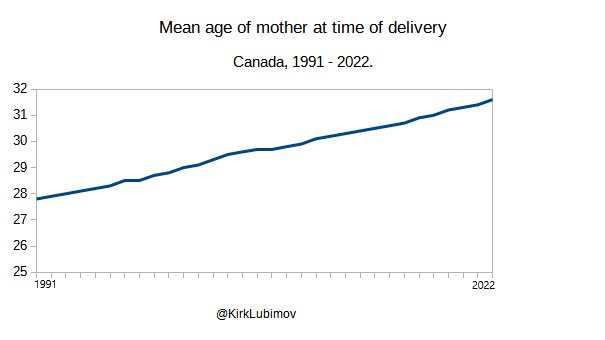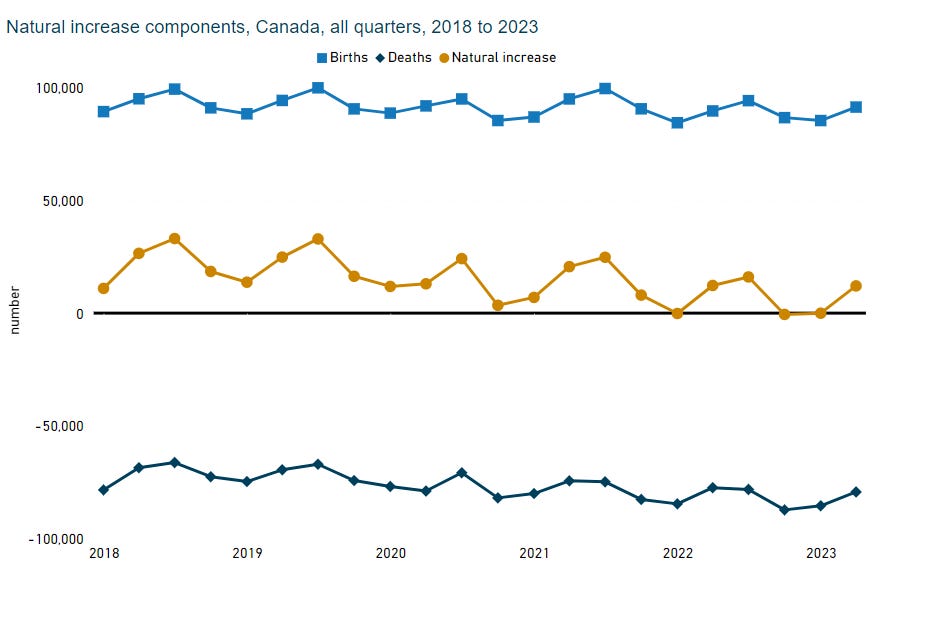Dropping birthrates is a global trend especially true in the Western and developed world. It is perceived as such a problem that it is being used as an excuse for mass immigration policies – erroneously. Canada is most definitely experiencing it as well.
There are many reasons why people are having fewer kids or none at all. The cost of living is a major contributor as gone are the days when you could raise a family with a good quality of life on one income. We have a societal move from in-person interactions to online which removes certain values and human connections. This essentially causes degradation to the community value and association of people. It is common to hear how hard of a time people have in meeting new people yet most of those places have more people.
City planning has a major contribution factor that isn’t considered enough on this topic. The majority of city planning has gone from family-friendly (encouraging) developments – neighbourhoods; to high-density, expensive, and small square-foot dwellings that in no shape, or form make them appealing for family growth. It’s subliminal and not motivating.
We are not building enough gathering, collision, spaces for people to meet. We are not building enough family-friendly communities. In most of the high-density areas, there are very few activities for kids, and mothers with kids thus removing them from the ‘picture’. It may no seem like a big deal but creating and curating environments a certain way normalizes and develops certain characteristics in a culture thus society.
The mean age of mothers at the time of delivery (based on live births) has never been higher in Canada and has increased every year since 1991 to 31.6 in 2022. The more expensive the province the higher the age of mothers is at delivery, with Ontario having a median age of 32.2 and British Columbia 32.4.
Unlike what you most likely hear in the media, Canada is having enough babies to replace our dying-out population (replacement rate) but by just barely. The issue is that our population of aged 65+ is growing fast and has outnumbered children aged 0-14. Our mass immigration policy isn’t exactly addressing our needs for children.
Our birth rates are dropping even with the mass immigration and the fertility rate is dropping as well even though we have more people. In other words, Canada’s current population is having fewer kids, and even the recent immigrants seem to have fewer kids in general once they are in Canada.
We will dip below our replacement rate sooner or later. Most likely in the next few years, on a long-term basis - childbearing-wise. It’s important to point out that while our population will grow because of mass immigration we still need to have a society that has children, and more children.
Looking at the long-term data of fertility rates and Canada’s age demographics the picture was clear for decades to the divergence we are heading on. It was completely missed by politicians and policies. Actually, it was never even given enough weight or the time of the day.
Canada is now at the intersection where it has to take its future planning as a country, as a culture, and as a society seriously. We need to encourage and prioritize human connection right from the earliest childcare years. The cost of mass immigration policies has to be redirected into encouraging and supporting people to have more kids.
Making Canada fertile will need to be a success metric.




